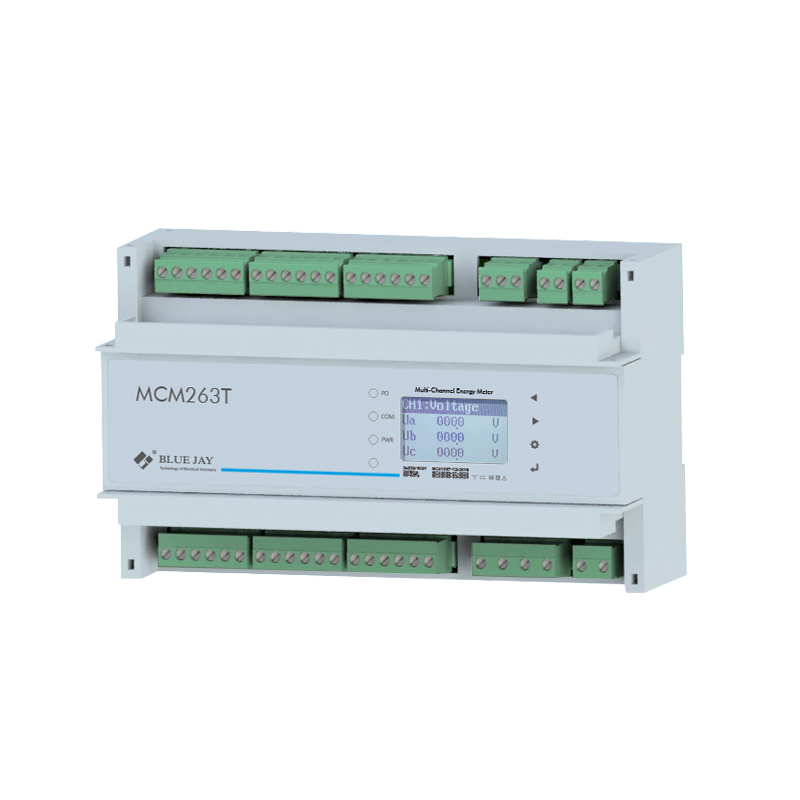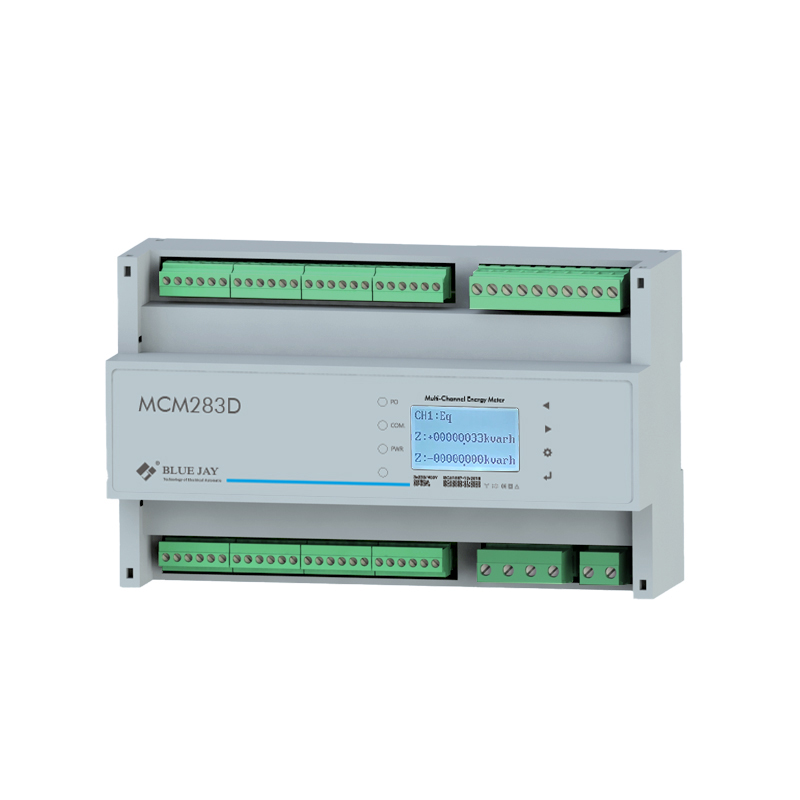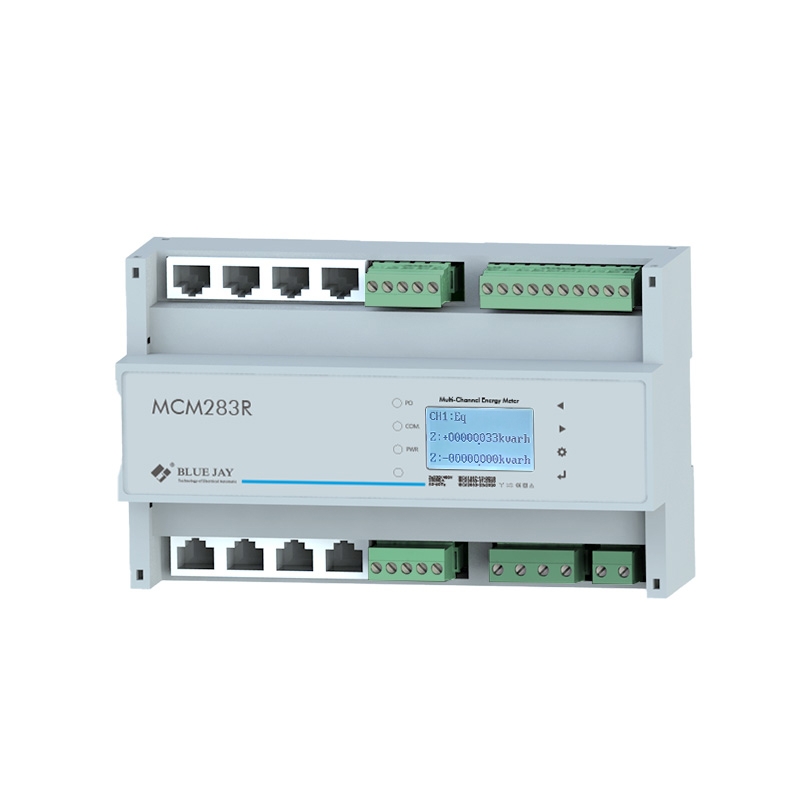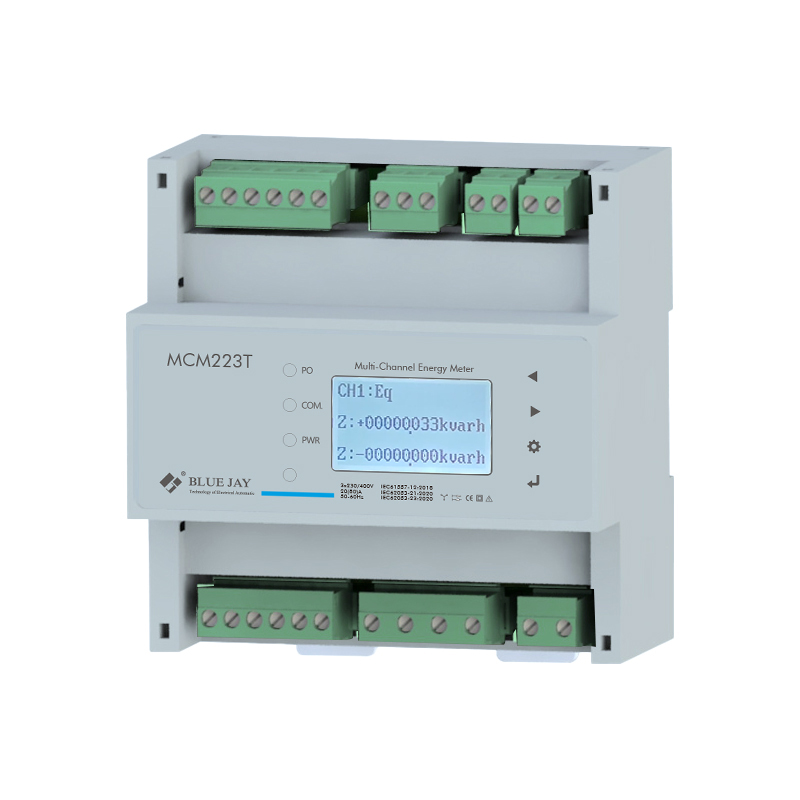Abstract: This article will introduce the energy meter parameters from definition, types, and how to choose meter based on energy meter parameters.
Table of Contents
What are Energy Meter Parameters?
Types of Energy Meter Parameters
| Measurement Parameters | Description | Unit |
| Voltage (V) | The potential difference between two points in a circuit | V |
| Current (A) | The amount of electrons flowing in a circuit | A |
| Power (W) | Active Power (kW): The actual power in kW used to perform actual work (for example, power equipment) | kW |
| Reactive Power (kVAR): Non-operating power used to maintain a magnetic field in equipment (e.g. motors) | kVAR | |
| Apparent Power (kVA): The total power provided by the power system, including real and reactive power | kVA | |
| Power Factor (PF) | The ratio of active power to apparent power indicates the efficiency of electrical energy use |
As for energy consumption parameters, it tracks the total amount of energy used over time:
Energy (kWh): Measures the total amount of electrical energy consumed over time. It’s the product of active power and the time interval (usually in kilowatt-hours).
Demand (kW): Represents the highest measured power usage within a specific period. It helps identify peak usage times and optimize energy consumption patterns.
As for additional Parameters, it depends on energy meter features so some advanced meters may also record power quality, time-of-use metering, phase angle, and event logging.
Power Quality: This may include measurements like harmonics, voltage sag/swell, and frequency variations.
Time-of-Day (TOD) or Time-of-Use (TOU) Billing: It tracks energy consumption during different periods with varying electricity costs.
Phase Angle: The angular difference between voltage and current waveforms in a multi-phase system.
Event Logging: It records power outages, voltage spikes, and other significant events
Energy Meter Display Parameters
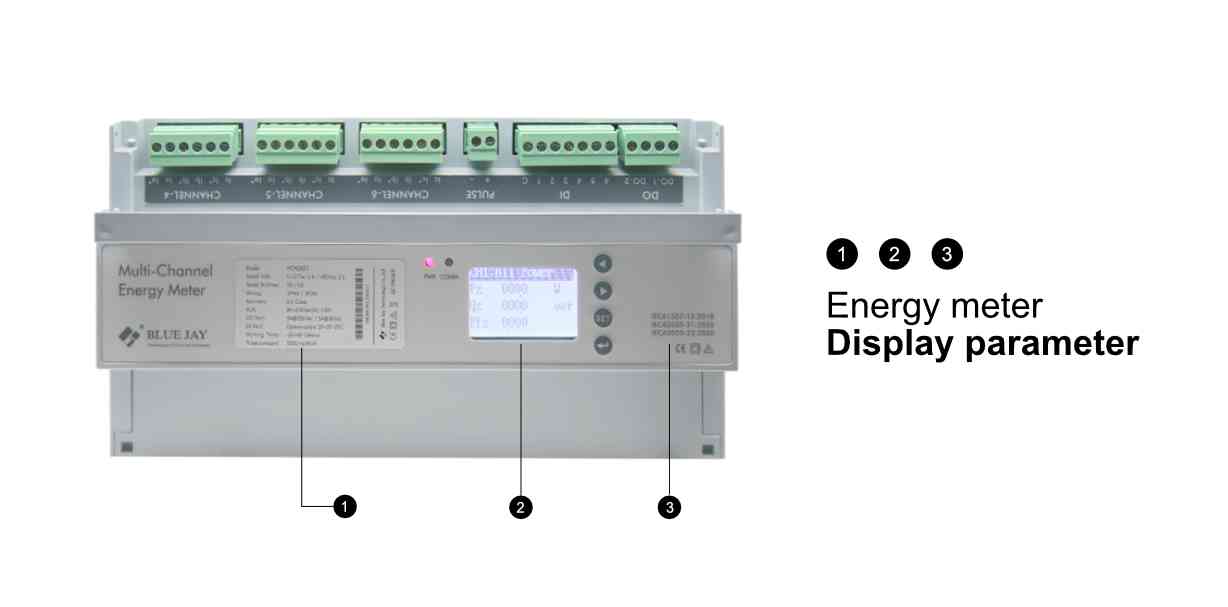
Energy meter parameters to consider when choosing an energy meter
As you know, the electrical measurement device is a broad term that includes multi-meter, installation-type instruments. To help you choose suitable digital energy meters, you need to know the types of digital energy meters and some key energy meter parameters.
Types of digital energy meters
According to the function, digital energy meters can be divided into Voltage meters, Current meters, Active (Reactive) power meters, Frequency meters, Power Factor meters, etc. The all-in-one function type is called an intelligent multifunction energy meter.
Here are some key energy meter parameters to consider when choosing an energy meter:
Energy Meter Accuracy and Reliability
You should choose an energy meter that is certificated by a recognized agency such as IEC or ANSI. These certifications can ensure your energy meter meets industry accuracy and reliability standards to ensure accurate energy consumption measurements. The energy meter accuracy Class level includes 0.1, 0.2, 0.5, 1.0, 1.5, 2.5, and 5.0. The level refers to the error percentage of the electrical measurement devices when it comes to full range. For example, the accuracy of the 193I-9X4 three-phase current meter manufactured by Blue Jay is 0.5 with an input current of 5A. That is to say when this current meter measures the full range current of 5A, the maximum error percentage won’t be 0.5.
Blue Jay energy meters meet IEC standards so you can choose our energy meter. Besides, our energy meters have high accuracy up to class 0.2. Our digital meters and analog meters are high-accuracy electrical measurement devices too. Our digital meters are known for their precise reading and high accuracy. Our analog meters, according to the motion of the pointer, have high accuracy in the change trend and scope. As a first-class energy meter manufacturer in China, we also specialize in “power control, power protection automation” equipment. Thus, you can get the high-accuracy energy meter at Blue Jay.
Energy Meter Power supply
Input Measurement Signals
Optional Functions for Energy Meter
You should ensure what energy meter functions you need because there are some optional functions except for the general measurements. For example, the communication function can choose RS485 and MODU BUS protocol, or Ethernet communication. The analog output function may be 4~20mA. Is the control function needed or not? An energy meter with the control function can alarm by relay output when the voltage is overloaded to set value.
CT Ratio Setting
When selecting an electricity meter, considering the Current Transformer (CT) ratio setting is crucial for accurate energy consumption measurements. The CT ratio setting establishes the relationship between the primary current (lPrimary) flowing through the primary winding of the CT and the secondary current (lSecondary) flowing through the secondary winding of the CT. This ratio is essential for scaling the measured secondary current to the actual primary current, which is used to calculate power consumption.
Commonly, the full range of the current meter can be set based on the installation current transformer. And the setting value is any one of 5A~8000A according to our country standard.
Respond to Speed
Selecting an electricity meter with an appropriate response speed is crucial for accurately capturing and measuring transient events in electrical systems. Response speed refers to the meter’s ability to react to sudden changes in voltage and current, which can occur due to various factors such as switching loads, motor startups, and lightning strikes.
For example, Digital meters generally adopt specialized chips considering multi-functions, and response time is slowed down. Only 3 ~ 5 digitals are available in one second. However, our Electronic digital meters can show 50 digitals in one second with high precision and strong stability. The response speed is quite fast for customer satisfaction.
Frequency of Energy Meters
The common frequency of energy meters is 50 Hz. But there are some other meter frequencies for special field applications. For example, frequency 40 Hz Digital meters are for aeronautical applications, and frequency 20 Hz meters are for super audio power and transformer output current. Thus, you need to consider the frequency of energy meters. Blue Jay Electronic can satisfy customers’ needs by manufacturing different frequencies of digital energy meters.
Besides, there are other energy meter parameters to consider when choosing an energy meter. They are measurement functions, demand measurement, TOU/TOD billing, Phase Configuration, mounting method, etc.
What are the energy meter parameters that Blue Jay Meters can measure?
The energy meter parameters that the Blue Jay meter can measure are:
- Apparent power (min/max, total)
- Active and reactive power (min/max, total)
- Current (min/max, avg)
- Voltage (min/max, avg)
- Frequency (min/max, avg)
- Total current harmonic distortion THD (I) (per phase)
- Total voltage harmonic distortion THD (U) (per phase)
- Power factor (min/max, avg)
- Apparent energy (total)
- Active and reactive energy (total)
To know more about Blue Jay energy meter parameters, please contact us via info@cqbluejay.com.
Conclusion
In conclusion, by carefully considering these energy meter parameters, you can choose an energy meter that can accurately measure, monitor and analyze your energy consumption, allowing you to make informed decisions to optimize energy consumption and reduce costs.

